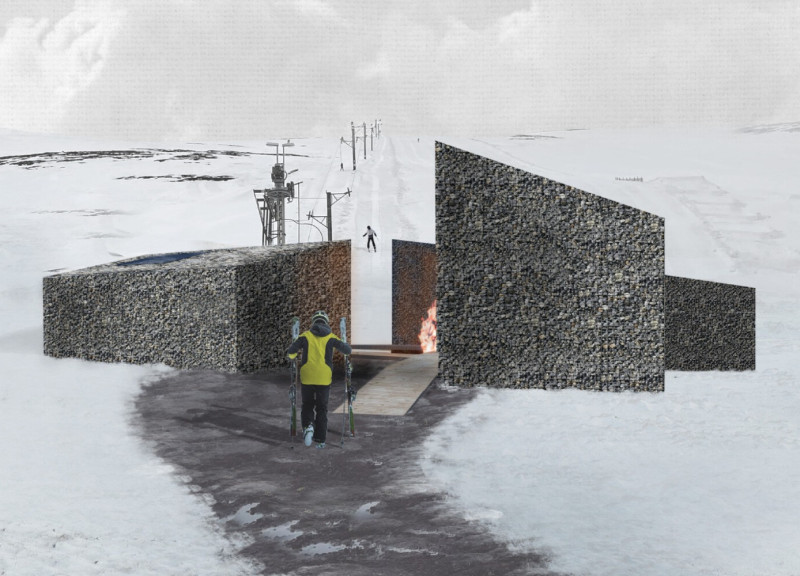5 key facts about this project
A defining characteristic of the project is its design ethos, which prioritizes sustainability and environmental integration. The use of locally sourced materials, such as timber, stone, and glass, contributes to a sense of place, while also reducing the carbon footprint associated with transportation. The choice of materials not only resonates with the area's cultural heritage but also enhances the building’s thermal performance, reflecting a commitment to energy efficiency. By employing large glass panels, the design encourages natural light to penetrate deep into the interiors, creating bright, inviting spaces that reduce reliance on artificial lighting.
A detailed examination of the architectural components reveals a careful consideration of scale and proportion. The building's massing is thoughtfully articulated to blend seamlessly with the surrounding topography, avoiding a jarring contrast with the natural environment. The roofline undulates gracefully, mirroring the contours of the landscape, which serves to unify the structure with its setting. Each volume within the design is purposefully placed, ensuring that sightlines are respected and enhanced, fostering visual connections both within the space and extending outward to the surrounding vistas.
The interior layout is meticulously organized, reflecting a clear understanding of the way people inhabit space. Open-plan areas facilitate communication and interaction, while dedicated zones for privacy and reflection are strategically integrated to accommodate diverse activities, from informal meetings to quiet study. Each space is designed with user comfort in mind, featuring ergonomic considerations and versatile furnishings that can adapt to various needs.
Furthermore, this project embodies a commitment to cultural dialogue through its architectural language. By incorporating elements inspired by local traditions and materials, the design becomes a narrative device that speaks to the area’s history and cultural identity. This dialogue is evident in the detailing—where handcrafted stonework meets sleek contemporary lines, supporting a narrative of continuity between past and present.
Landscaping plays an integral role in the project, with outdoor spaces designed as extensions of the interior. Accessible terraces and gardens promote outdoor engagement, while offering serene retreats for leisure and social interactivity. The thoughtful arrangement of plantings not only provides natural beauty but also enhances biodiversity, supporting local ecosystems.
In exploring the project further, one can appreciate the various architectural plans and sections that illuminate the relationship between different spaces and how they function together. The architectural designs offer a comprehensive understanding of the interplay between built form and natural surroundings. The careful consideration of lighting, texture, and materials throughout the design process results in a multifaceted experience that aligns with its intended purpose.
This project exemplifies a unique integration of architecture and site, creating a compelling narrative that reflects both contemporary needs and historical context. Those interested in delving deeper into the architectural ideas at play are encouraged to explore the project presentation, where architectural plans, sections, and other details await to unveil the story behind this well-conceived design.


























